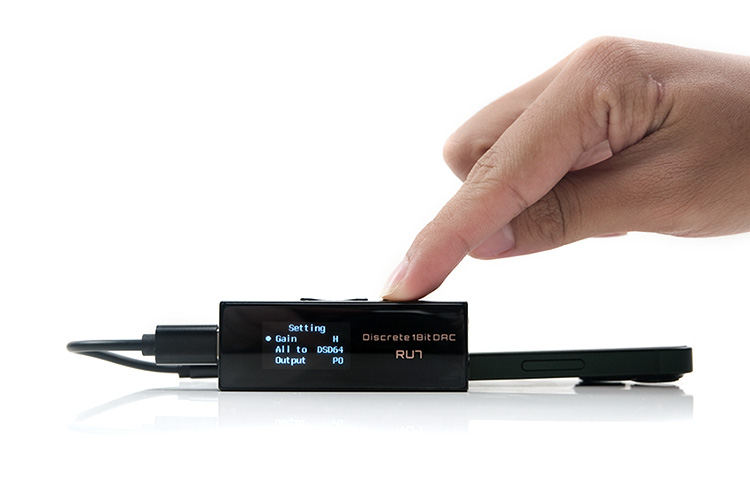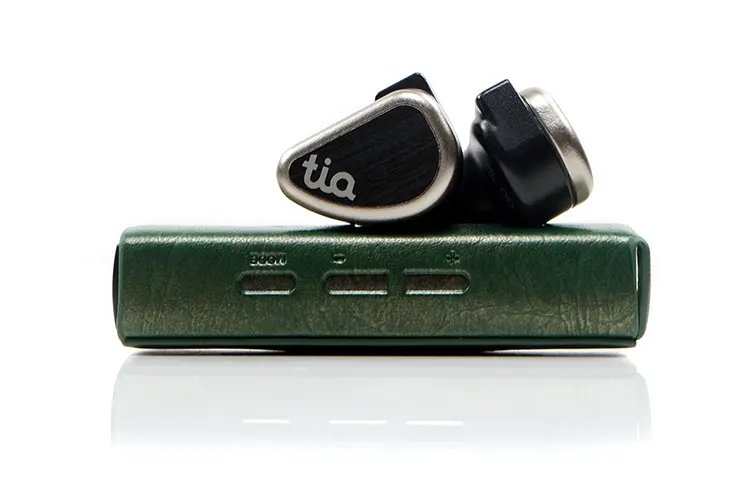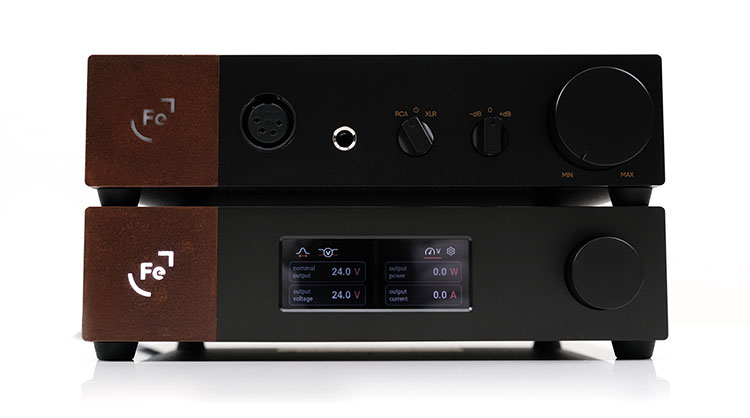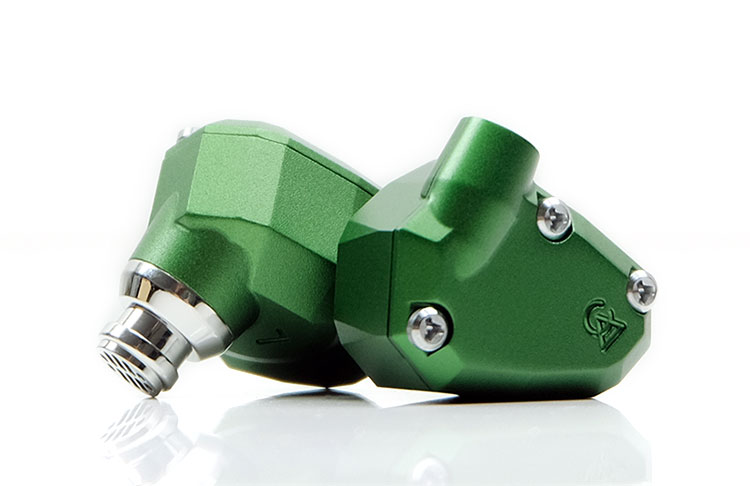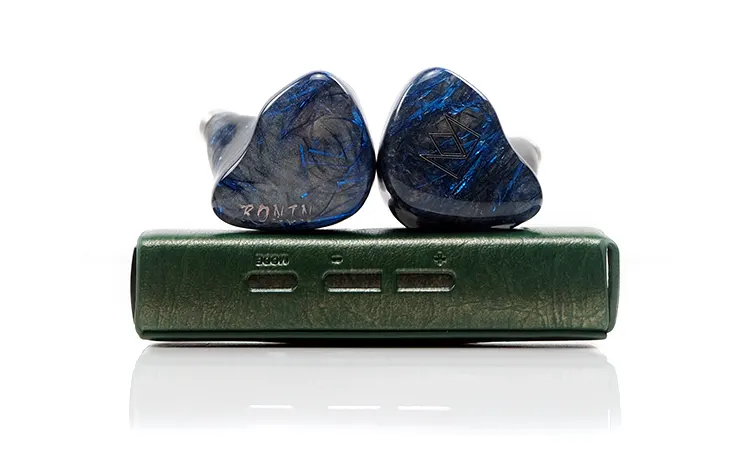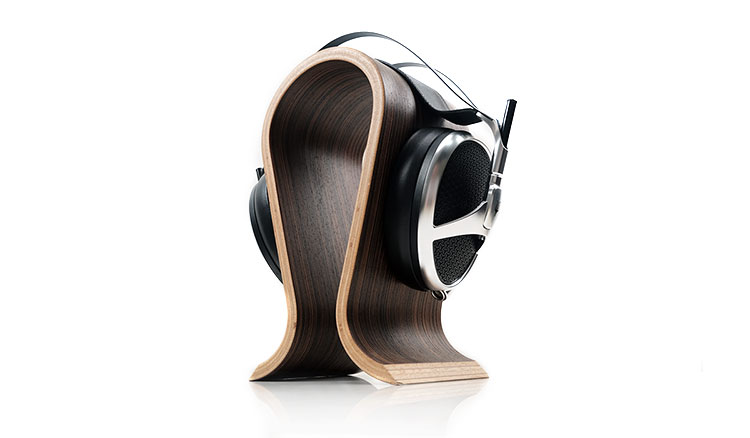Sound Impressions
The following impressions were completed using the Noble Audio Ronin and the 64 Audio Trio as our main IEM pairings. Our selected sources included the Samsung S23 Ultra and the Apple iPhone 13 mini, both with the latest firmware updates.
Summary
The Cayin RU7 tuning is natural to neutral with deeply impressive holographic staging quality that generates a complex and immersive presentation. A soundstage that is deeper and wider with superlative imaging capability compared to pretty much all of the dongle DACs I have reviewed to date
The dynamic range with our tested monitors is excellent with plenty of headroom, especially when going balanced where the additional power on tap makes its presence felt. The RU7 will also offer a superior driving capability to some efficient headphones compared to a lot of the similarly priced competition.
I must add a caveat on the exact coloration of the RU7’s tuning. At its heart, it’s natural, almost analog-like at times but does not deliver the heady vocal bloom and sweetness of the R-2R RU6. It is a little firmer in low-end weight and generally has a more even-tempered harmonic balance compared to its sibling.
This is not just for the RU7 PO. The line-out performance is much more than I expected also. I would say this with respect to the balanced line-out which will give you desktop levels of acceptable voltage at 2.4 Vrms. The single-ended 3.5mm 1.2 Vrms is too soft and flat sounding for my liking.
Going balanced LO not only brings a satisfying level of dynamics and detail to desktop amps but it also can be more revealing and transformative when using the RU7 All-To-DSD modes.
Coloration
You can shift that core RU7 tuning a little more to analog or a little more to clean depending on what your default All-to-DSD setting will be.
DSD64 will offer the thickest and warmest sound from top to bottom, and of the three modes will come closest to that classic analog tone. It is an excellent choice with brighter monitors or hybrid monitors where you want a bit of bass to lower-mid thickness to shine.
However, it lacks a bit of sparkle and air, sounding perhaps too dense with warmer-sounding headgear. It also lacks the impressive instrumental separation of the higher modes.
DSD256 is the cleanest RU7 mode, with plenty more sparkle and a more dynamic or lively performance. Of the three modes, it will sound the most resolving, filling the soundstage in a more satisfying manner and bringing subtle background details to the fore.
Its downside is that it can fatigue a bit more with brighter-tuned monitors and create a harder edge to vocal notes but it is generally the mode I would use with headphones such as the Meze Audio Elite.
DSD128 is a happy medium. It is a substantial jump from DSD64 in terms of resolution and delivering a more holographic soundstage. However, it is not quite as busy or articulate in the upper mids and highs as the DSD256 mode. Of the three, the RU7 DSD128 mode will likely create the most balanced and flexible sound signature.
Staging & Dynamics
This area is the RU7’s forte for me and is not unlike how the N7 stood out among some of its peers in the DAP market. It’s not just a spacious-sounding dongle DAC but rather what it does with that space also.
And the amount of separation is stunning for a dongle, especially with monitors such as the Noble Audio Ronin which, in its own right, has a very spacious and detailed soundstage capability.
Everything instrument, every vocal has its own well-defined position and a very black background making them easily picked out. The excellent depth and firm sub-bass presence combined with impressive note texturing add to the gravitas and overall holographic quality of the staging performance.
Notes that sounded dull or indistinct on the very extreme sides of the stereo field on dongles such as the Questyle M15 were clear and resolute on the RU7/Ronin pairing.
The specific mode you choose on the RU7 will have an effect on the quality and bias of the soundstage, however. DSD256 is the most extended and widest sounding. It will shine a light on the micro-detail and sound the most expansive, especially with headphones. It will draw your ear more to the upper-mids and treble performance which gets a boost.
DSD64 reduces the layering for me and cuts off the air and headroom in comparison but does offer a weighty and deep bass performance with dynamic driver monitors. DSD128 will create the most balanced soundstage out of the three and one I would tend to use with neutral and clean IEMs.
Synergy
Line-Out
The Cayin RU7’s lineout works for both 3.5mm single-ended and balanced with a corresponding rating of 1.2 Vrms and 2.4 Vrms, (fixed, 1kHz@10kΩ), respectively.
Testing out of a Ferrum OOR/HYPSOS setup with the Meze Audio Elite going balanced end-to-end will produce the superior performance of the two options.
At 2.4 Vrms you are hitting a standard voltage range for regular single-ended desktop DAC connections. Whereas the single-ended output at 1.2 Vrms is softer-sounding and lacking in the dynamics of the 2.4 Vrms equivalent.
Staging becomes a little flatter and narrower on the 3.5mm LO whereas the balanced PO stretches out the staging in all directions doing a much better job filling in the soundstage of the Elite and giving it a bit more ‘bounce’ on the lows.
You can still tweak the RU7 LO performance via its All-to-DSD setting and one thing I noted is just how well the OOR/Elite setup amplified those differences.
The DSD64 will give you that nice thick and smooth timbre but it’s less spacious and less resolving also. Once you switch up to DSD256 everything stretches out producing a cleaner more articulate presentation that the OOR and the Elite were able to capture quite easily.
Sensitivity
Admirable and one of the best dongles in the business for delivering a very black background with very low levels of noise with either PO output. I suspect the discrete-engineered resistor network volume control has been implemented in a way to ensure there is no hiss at very low levels.
For example, I noted that at zero there is a mute circuit kicking in giving absolute silence on sensitive IEMs such as the Campfire Audio Andromeda 2020.
Moving to 1 on the volume relay immediately introduced a low-level audible signal with perfect channel balancing for both single-ended and balanced outputs. From there, the volume rises in a very controlled and steady manner with plenty of micro-control for low-load gear to tune the listening levels perfectly.
I would also recommend switching over to an app with dedicated USB-driver support in Android. If you allow the signal to pass through Android or the smartphone’s own volume control the dynamic range and sensitivity to volume changes are either reduced or cruder for refined listening level adjustments with sensitive IEMs.
Select Pairings
There is enough power from the RU7, (balanced), to drive just about any IEM with excellent dynamic range and surprisingly good levels of resolution.
Pairings will come down to preferences and here I found the RU7 to be very flexible, particularly when adjusting the All-To-DSD mode level which, in turn, tweaked both the technical and tonal performance.
A case for DSD256
For example, using the Noble Audio Ronin as the main pairing with the RU7 in balanced high gain output mode, the DSD256 option was preferred over the DSD64 base setting.
The Ronin’s penchant for micro-detail and spacious soundstage demands to be filled so giving its already warmish tonal profile adding even more thickness and dropping some of the detail using DSD64 leaves the performance a bit blunted, too rounded and dense, with a generally unrevealing character.
Switching up to DSD256 expands the presence of micro-detail further out and above with a slightly cleaner profile that acts as a pleasant counter to the relatively warm and smooth tuning on the Ronin. You still get that nice planted low-end the RU7 can deliver so it is not a lean sound but rather a more dynamic, wider, and articulate performance.
A case for DSD64
On the flip side, the 64 Audio Trio sounded smoother and more engaging to my ear using DSD64 despite the reduction in technical capability. It’s a brighter sound signature through the mids and highs compared to the Ronin but with a much stronger bass response from its dynamic driver.
DSD64 mode played right into its hands with a thicker tonal profile and a warmer bass response. DSD256 did increase the dynamic interplay between instrument and vocal as well as expanding the soundstage but the stronger treble presence gave the Trio a comparatively fatiguing sound.
A case for DSD128
A comfortable middle ground is DSD128 and a setting that matched the synergy of the Campfire Audio Trifecta perfectly. What you do not want is the stage closing in on you with the Trifecta nor do you want too much treble emphasis unbalancing the instrument and vocal timbre.
The RU7’s DSD128 setting kept the power of those triple dynamic drivers ticking over nicely but also added a smoother mid and treble response compared to the more detailed but more aggressive vocal sharpness from the DSD256 setting.
Opting for DSD64 blunted the midrange presence a bit too much in favor of a denser but less detailed bass delivery and constricted the available headroom at the same time leaving it sounding flatter and less revealing.
Headphone Pairings
Though a dedicated DAP such as the N7 will offer a lot more headroom the RU7’s 400mW 32Ω load rating is ‘best-in-class’ on paper for a dongle matched only by the new Luxury & Precision W4, (yet to be reviewed).
I was pleasantly surprised by the performance with more efficient headphones such as the Meze Audio Elite. Though not quite as expansive or as refined as something like the more powerful Shanling H7 portable amp using OTG, it did offer more generous weight on the lows and a thicker more robust amount of body in the mids and vocal performances.
Where it came up short was just in the level of fine details and expansiveness of the staging. DSD256 on the RU7 with this pairing is recommended to close the gap as much as possible in terms of resolving capability and creating a more complete and holographic soundstage with the Elite.
The Audeze MM-500 works very well with the RU7 using DSD64 and DSD128. Though not as detailed as DSD256, I did prefer the slightly smoother sound of DSD128 and the enhanced analog overtone and thicker lows from the DSD64 performance.
Again, though not quite as expansive or as dynamic as a more powerful portable or desktop amplifier the timbral match of this combo was nevertheless very pleasing.
The RU7 does come up a little short for more demanding planar headphones such as the Stealth or high-impedance models like the Atrium from ZMF.
However, if you have headphones such as these chances are you have a quality desktop amplifier already to drive it. Here, the RU7 line-out will be much more useful with reference amps such as the OOR able to capture the core sound of the various all-to-DSD modes quite well.

